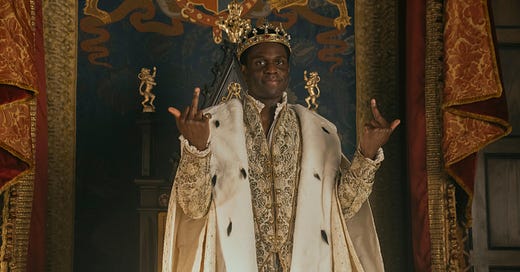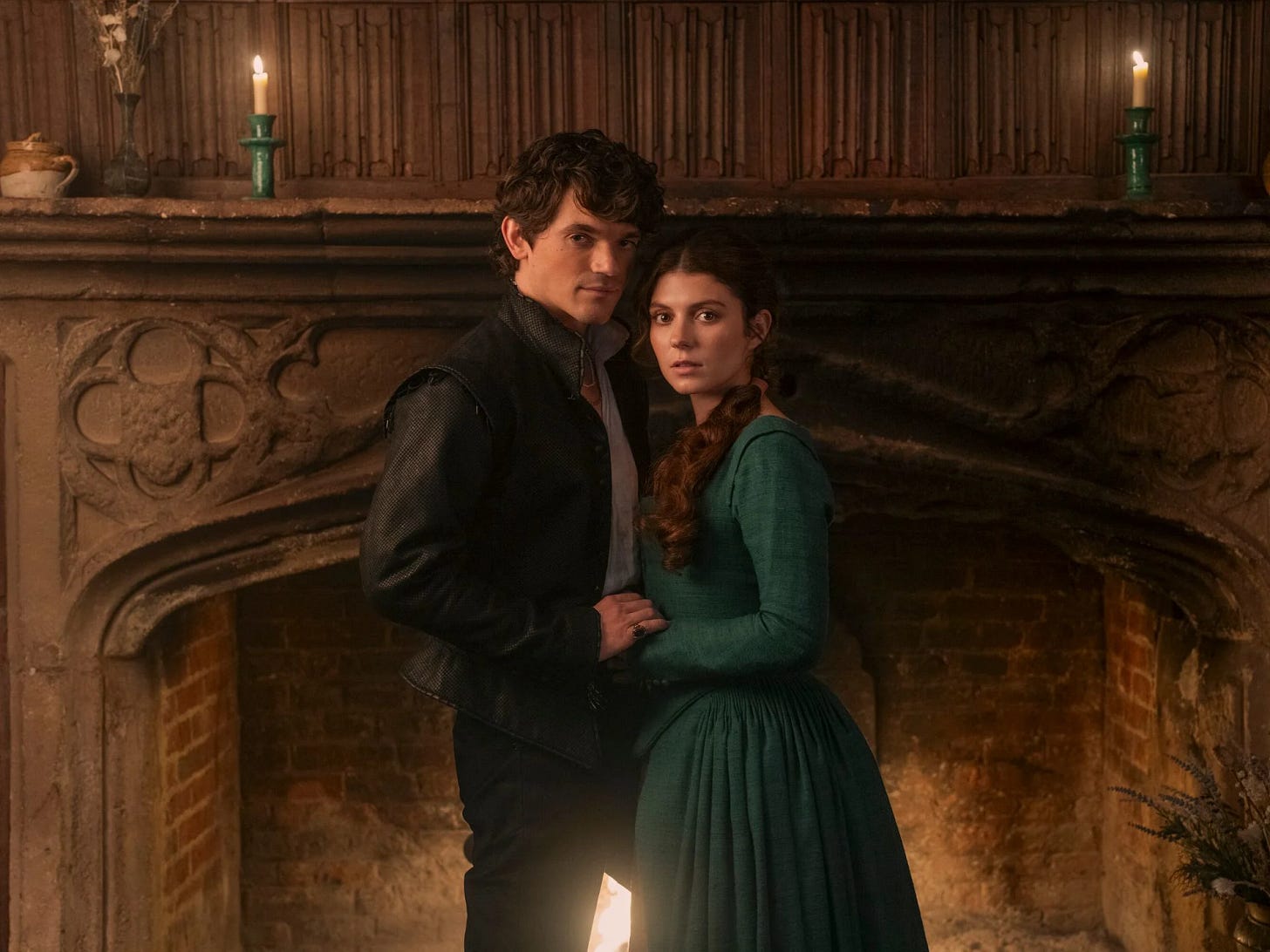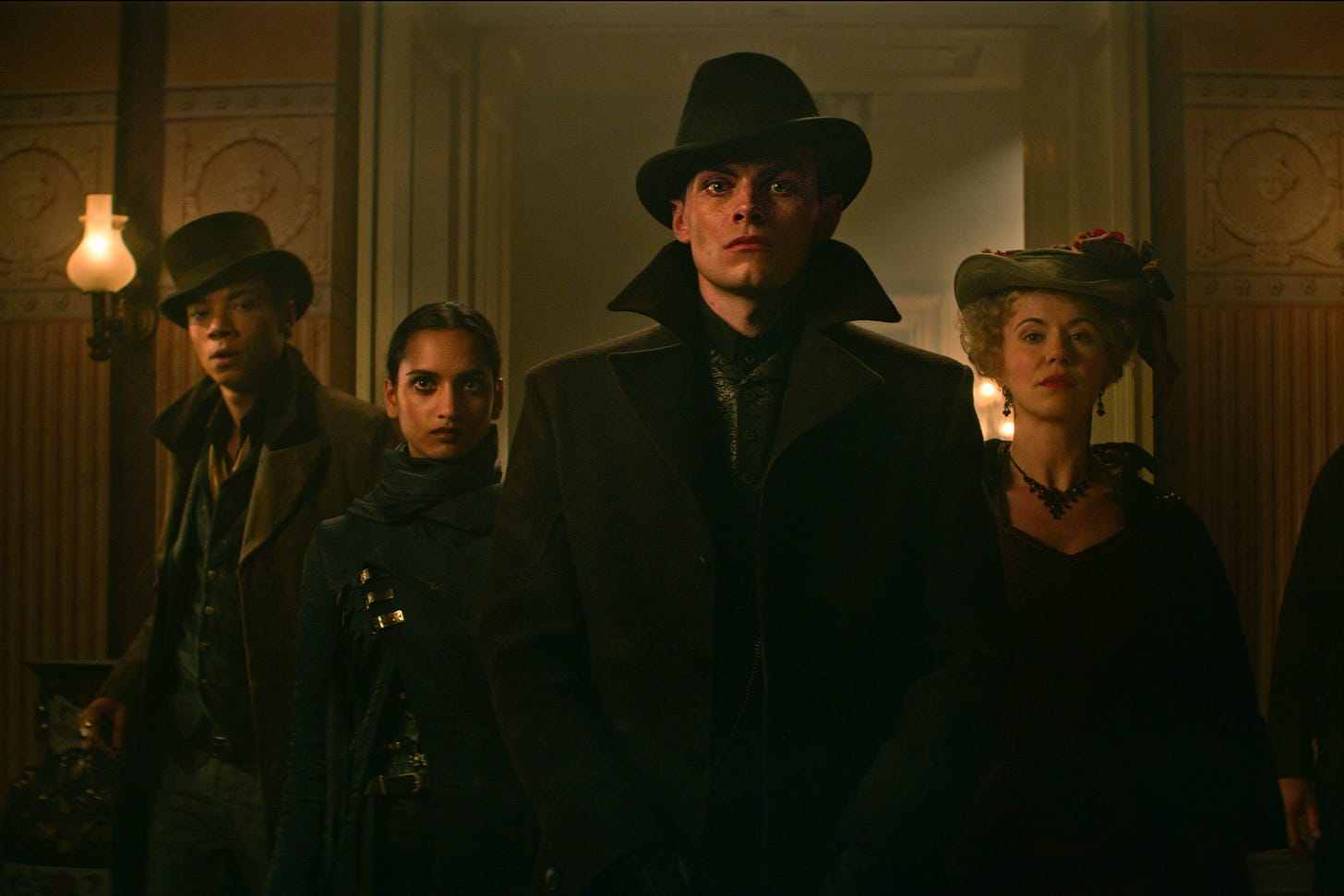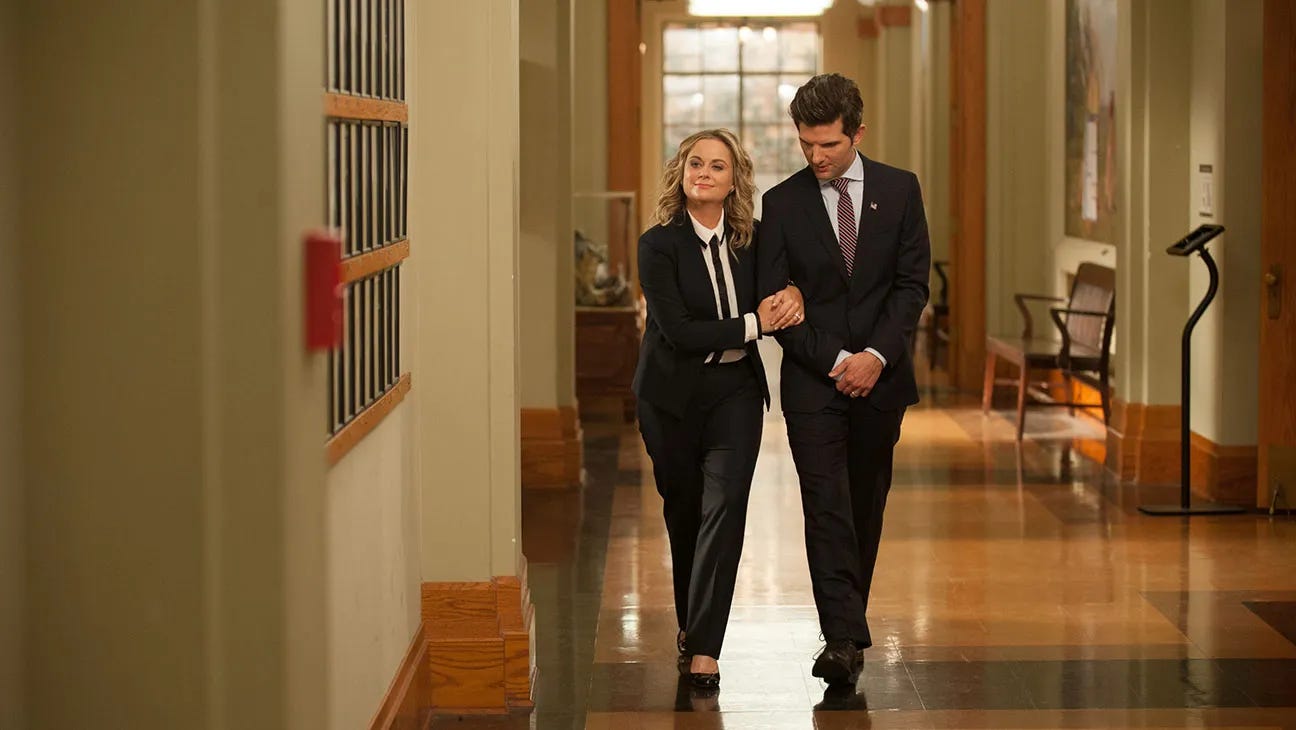Why all your favourite TV shows are getting cancelled
A plea for television executives to exercise more patience.
*This post contains spoilers for My Lady Jane (2024)*
On August 16, 2024, Amazon Prime announced that My Lady Jane would not return for a second season.
The historical fantasy show centred on Lady Jane Grey and her husband Guildford during the reign of King Edward, where society is divided by Verity and Ethians. Overnight, she finds herself crowned queen and ends up becoming a target of both Ethians and Verity royals who want her place on the throne. But get this, Guilford can shape-shift into a horse. Jane’s husband is a man by day, horse by night. That’s insane. Who wouldn’t want to watch that?
When the news broke, I watched my little corner of Twitter descend into chaos. The show was rated 94% on Rotten Tomatoes and numerous Reddit threads have popped up, with fans calling the show “surprisingly great” and expressing their dismay at its cancellation.
Similarly, fantasy series Shadow and Bone (2021) was cancelled by Netflix after two successful seasons at the end of 2023. The show received a score of 89% on Rotten Tomatoes, and during its “first week on Netflix — April 19-25 — the series racked up 721 million minutes of viewing time and ranked second among original series in Nielson's National Streaming Report.”
“According to the newly launched report, Shadow and Bone ranked in the streaming platform's top 30 titles for hours viewed between January and June 2023… season 2 yielded a staggering 192.9 million hours of viewership.”
These sound like fantastic numbers, right? So why do shows that garner millions of hours of views keep getting cancelled?
During my research, what stood out to me is that the format in which we consume media is starkly different from the 1990s and early 2000s. Does anyone else born in the 1990s remember broadcast television and cable?
“Broadcast channels use public airwaves to transmit programs that are theoretically available to any TV set within range of a broadcast transmitter, at no cost to the viewer.” These channels such as NBC rely on advertising to generate revenue. Cable, however, charges audiences subscription fees for ad-free viewing.
Now, I can watch anything from my laptop or phone. Currently, there are a myriad of streaming services available, such as Netflix, Disney+, NOW, Hulu, Apple TV, Sky Stream and more, which have adopted a confusing, hybrid cable-broadcast approach.
What has changed significantly is how success is measured. Two decades ago, the success of a TV show was measured by total views per episode, with executives taking into consideration what else was on air during the time. Now, it’s measured through the total amount of streams during release week. Additionally, shows often get axed when it doesn’t rank on Nielsen’s Top 10 weekly streaming chart, despite the positive reviews and critical acclaim.
It’s also strange that every Netflix show with the same release day or week is forced to compete with each other for the top spot. TV shows with a higher marketing budget often cannibalise the top spot for weeks, making it difficult for lower-budget, independent shows to break through to the top 10. These are often the shows that get cancelled because they do not drive millions of hours of views immediately, and have to rely on word-of-mouth marketing. Ultimately, the metrics to measure success are stupid and don’t make any sense.
A 2023 Vulture article written by Josef Adalian and Lane Brown was particularly enlightening, arguing that “more viewers meant higher ad rates, and the biggest hits could be sold to syndication and international markets…. Streaming shows, in contrast, have fewer ads (or none at all) and are typically confined to their original platforms forever. For the people who make TV, the connection between ratings and reward has been severed.”
“Many streamers have spent themselves into billions of dollars of debt building their content libraries, and subscription fees haven’t grown fast enough to close the gap. If platforms like Netflix make any money at all, it is only a fraction of what entertainment companies used to make back when more than 105 million U.S. households spent an average of $75 per month on cable.”
Essentially, a TV show could get billions of streams on Netflix but still contribute nothing to increasing the company’s revenue. Shadow and Bone was reportedly cancelled because the show’s “viewing numbers failed to cover its filming budget.”
This is the reason Netflix took the step to raise their subscription prices, effectively forcing viewers to pay more to enjoy zero advertising. In a similar move, the Disney+ help page affirms “you can't fast-forward through ad breaks on Disney+, but if you subscribe to Disney+ Premium, the Disney Bundle Trio Premium, the Disney Bundle Duo Premium, or the Legacy Disney Bundle, the on-demand shows and movies in the Disney+ streaming library will be without commercial interruption.”1
What is more “under the old TV model, if a show was a success, its creator stood to get rich on the back-end profits. With all of linear TV’s revenue streams combined (ads plus syndication plus overseas rights), a studio might bring in $3 for every $1 in costs on a hit. The problem for writers was that most shows flopped, so there was no back end to get a piece of. Streamers offered something different. Their model, called “cost plus,” might pay $1.30 to $1.50 up front, making every show a winner — just not a very big one.”
In their interview with Michael Schur, the article also revealed that “to make up for the lost back end, streamers floated performance-based incentives. Schur describes a scenario in which a platform might promise a showrunner a $100,000 bonus for season one, $250,000 for season two, $500,000 for season three, and $1.7 million for season four. “So you’re like, Holy shit. This is great!” he says. There was a catch. Many seemingly successful series began to vanish after just a couple of seasons.”
This is a crucial reason why Netflix cancels television shows after just one or two seasons, because they don’t want to shell out money for well-deserved bonuses.
TV shows are also gradually disappearing from streaming services altogether. An article on The Guardian reported last year that “Disney+ removed a range of high-profile titles such as Willow, The One and Only Ivan, Big Shots and The Mysterious Benedict Society… In a similar move, Warner Bros Discovery has also removed dozens of shows like Westworld, Raised by Wolves, Gordita Chronicles, Run and Love Life from its platforms to save money, as has Paramount+ with its Grease spin-off The Pink Ladies and Jordan Peele’s Twilight Zone remake.”
Ultimately, the housing of television shows on the internet and the low return of investment is also calling into question the importance, and dire need for, physical archiving.
Part of me longs for the old days of 22-episode television. I grew up on Friends (1994), Gilmore Girls (2000) and Parks and Recreation (2009) — witnessing every week how my favourite characters were gently moving through their story arcs.
With streaming services commissioning 6-10 episodes per season, abrupt cancellations can feel like a huge betrayal to fans and fandoms who have only just gotten invested in a story. Writer Josie Zimmerman echoes similar opinions, stating that “during the golden age of television, one season in a television show would be at least 20 or more episodes long, thus making two seasons of a show more forgivable to viewers.”
Because of the shaky business model of streaming services like Netflix, it seems there is no more room for risk. But a level of risk is precisely what is needed for good creative projects to soar. Someone has to sit in a board meeting and declare: this story is worth experimenting with, and this story is worth fighting for.
No time, or space, is given to writers to find their groove, find their rhythm, or find opportunities based on the chemistry of their actors. For example, showrunner Michael Schur seized an incredible opportunity during Parks and Recreation’s third season. Initially, Adam Scott had signed on as a guest star but got a recurring role as Leslie’s love interest because of his wonderful chemistry with Amy Poehler.
“Our initial idea for Leslie was that she was going to have a series of relationships with different men — different kinds of men — over the course of the show and that she would sort of learn something different from each of them,” Schur confessed to Paste Magazine in 2013.
Ben and Leslie are still one of the most wholesome, ambitious couples on screen - but they would have never made it past the ‘will they/won’t they’ stage if patience wasn’t afforded to the show’s larger story. If Parks and Recreation was cancelled during its second or third season, it wouldn’t had had one of the most satisfying and clever sitcom endings. Just like with any other creative project, it takes a TV show years to get where it wants and needs to be.
I hope, sooner rather than later, that television executives are able to acknowledge that change is desperately needed. Frankly, our present day television creation and distribution model is clearly broken — with no solution in sight.
Fucking hell, guys.








